Instruction
Have the chipping yips? Here’s a drill to help
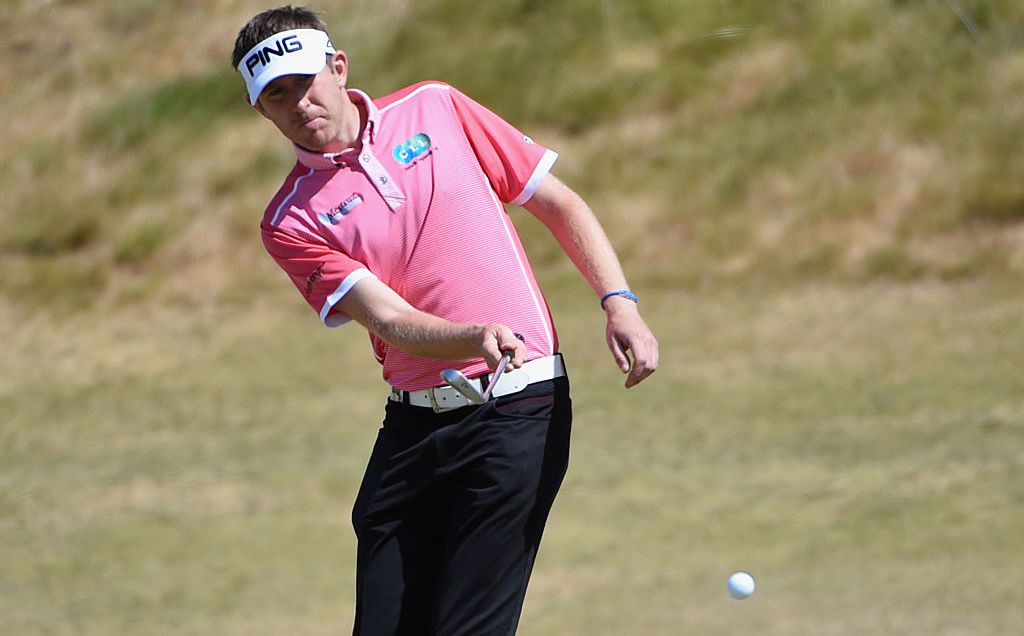
Note: If you don’t have the chipping yips, hit the back button right now on your browser. You don’t need to hear this stuff! But if you do have them, or are really struggling with your short game, read on.
—
Oh man, the chipping yips. They are such a horrible thing to watch, yet you can’t look away. It’s like watching a wreck at an Indy Car race.
Recently, I was asked if the chipping yips are curable, and unfortunately I have to say it’s very doubtful. I have never seen an amateur cure them in my lifetime on the lesson tee. Tiger Woods is the only player I’ve seen who has seemingly conquered them, but I will withhold my verdict until he comes back to play in 2017.
Generally, the chipping yips start as a mechanical issue, leading to chunks and skulls, or just poor chip shots overall. Eventually, these poor shots erode confidence, and your brain starts tell your body you can’t handle the shot at hand. This inner doubt leads to some involuntary action as the club nears impact, making it very difficult to hit the golf ball properly. From there, unless you cross the wires mechanically, you are often left to struggle forever.
While I don’t think chipping yips can be cured, I do believe they can be suppressed, and that’s what the rest of this article is about. I can think of a few players off the top of my head who have battled this very issue:
- Brock Mackenzie, a Web.com Tour player, now chips with one hand.
- Chris Smith, a PGA Tour winner, chips cross-handed.
- Doug Barron, a former PGA Tour player, also chips cross-handed.
Let me get you to understand how the yips are often created, and give you a drill that will help you combat them if and when when they show up. Hopefully, you can make a mechanical change before things get too bad.
How a chip shot should look
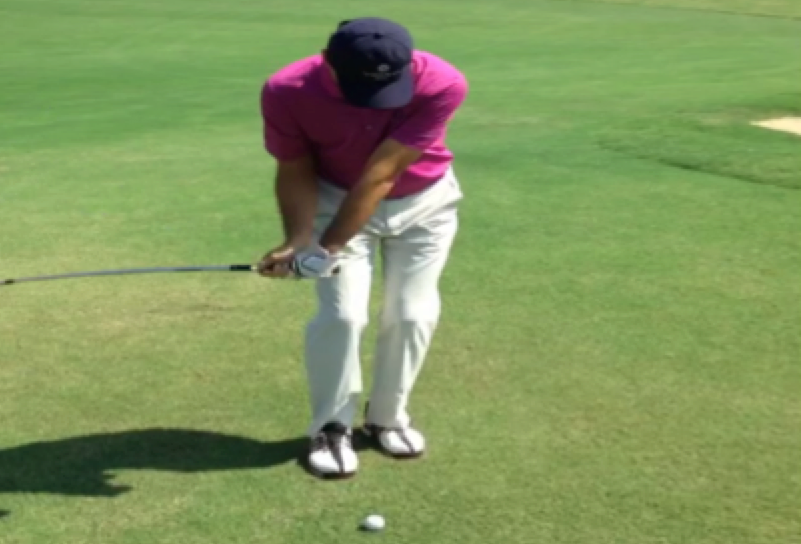
On the backswing, there should be some type of loading of the club to create a slight bit of lag on the way down. This can be done with a quick setting of the wrists, which you see in Rory McIlroy’s move, or with the change of direction at the top, as Steve Stricker does. But either way, there needs to be a bit of load.
It’s this lag that must be maintained into and through impact in order to maintain solid and consistent contact around the greens.
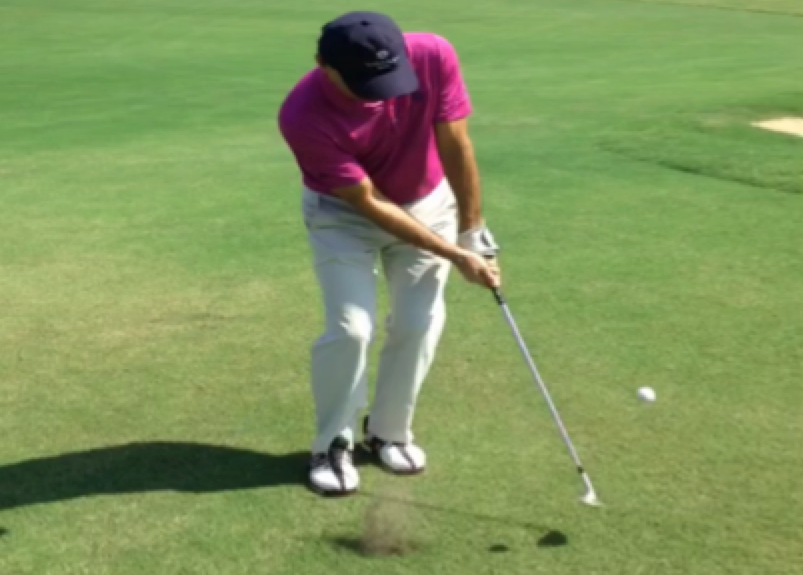
Next comes the rotation or pivot of the body through the shot, which keeps “lag pressure” on the club shaft through the impact zone, and pulls the clubhead into the ball with solid impact alignments. This is mainly a function of the rear shoulder maintaining a constant velocity through impact. When it slows or does not rotate toward the target, the hands take over. And when the hands take on too much of a role, the golfer is left very vulnerable to the yips.
What a yip looks like
The main problem with chipping-yippers is their inability to keep the pivot moving through the shot. Of course, there are different types of yips that occur for various reasons, but this is by far the most common.
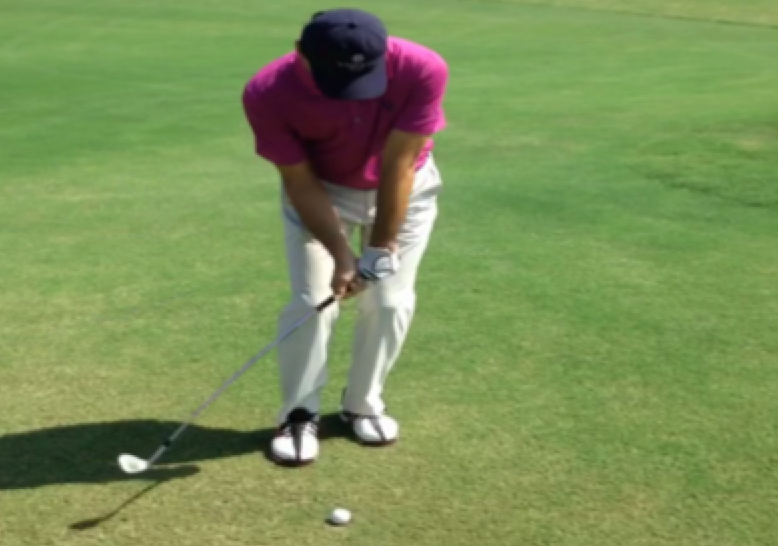
Here you can see this player has the club lagging, but notice the right shoulder. You can see it is staying too far “back,” and thus the shoulders are not opening up as quickly as they should at this point in the downswing.
An bad shot is about to occur. Yikes.
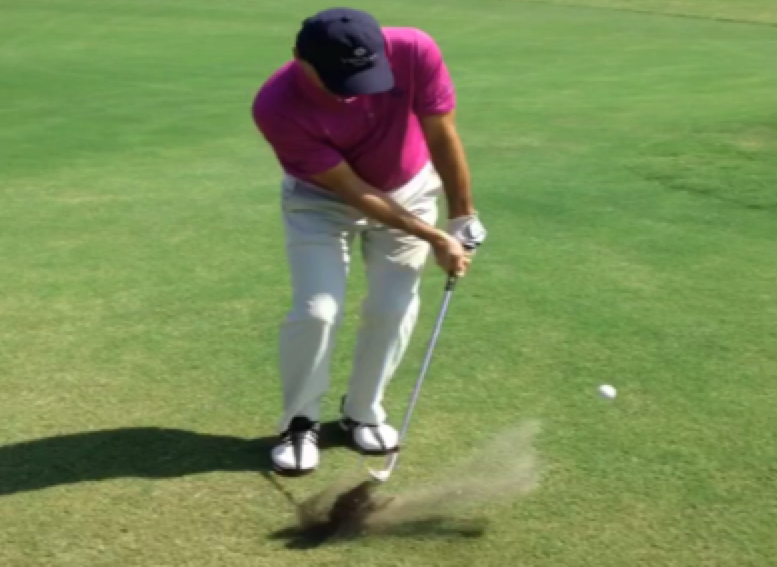
You can this see this shot was hit fat, and the right shoulder has moved forward very little from the last frame above. When the pivot slows, the player tends to fall backward, moving the low point rearward. And from there, you are in trouble.
So how do you stop sticking your pick in the ground?
The One-Hander
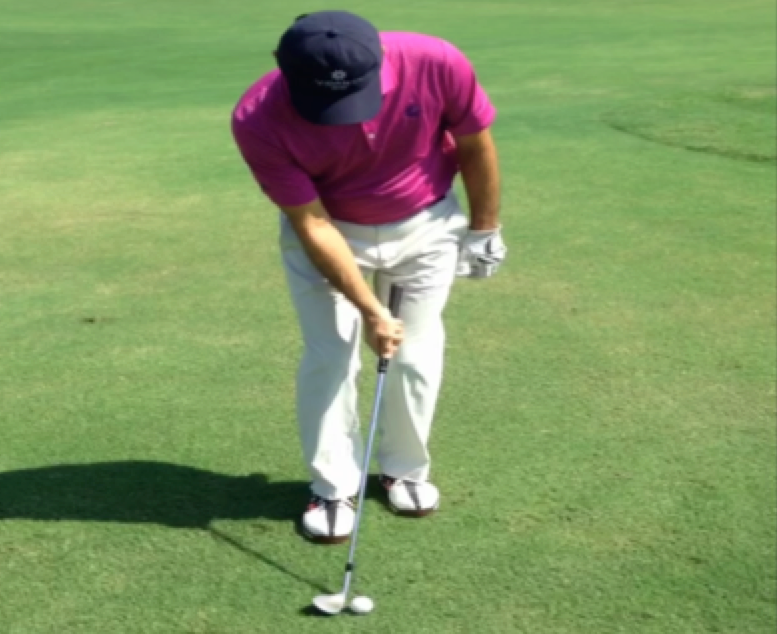
Set up with your rear hand on the grip as shown. Note that the handle and forearm form a letter “V” of a certain angle, and I don’t want to see that angle change.
The only way to achieve this is to use the pivot of your body to transport your arms, hands and club into impact, instead of flipping or blocking with your hands.
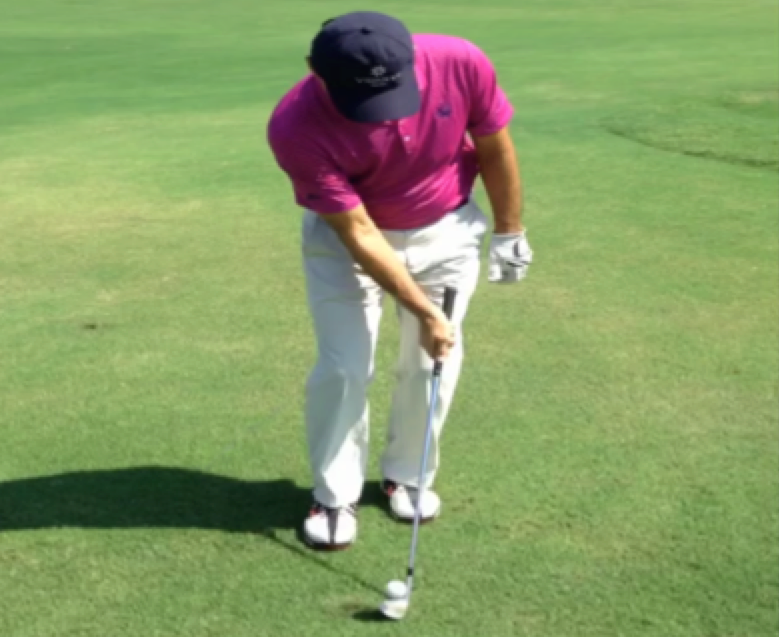
At impact (above), notice how far forward the rear shoulder has rotated! You can also see that the rear wrist is bent and the “V” is still intact, as it was during address.
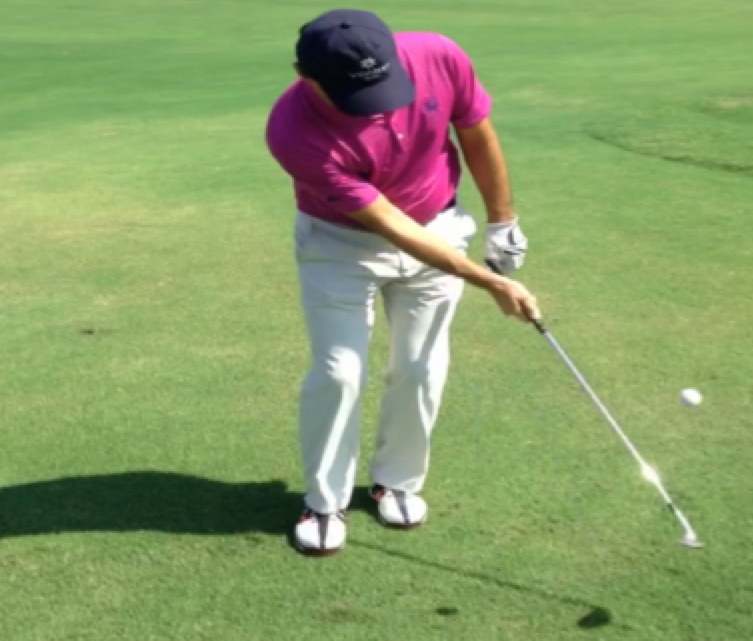 Even in the frame above, the right shoulder is still moving forward and the lag is still intact. This is the way to pitch the ball like a pro!
Even in the frame above, the right shoulder is still moving forward and the lag is still intact. This is the way to pitch the ball like a pro!
Still have doubts that the pivot of the body or right shoulder controls lag pressure? Check out this photo comparison below. There’s significantly more rotation in the right frame.
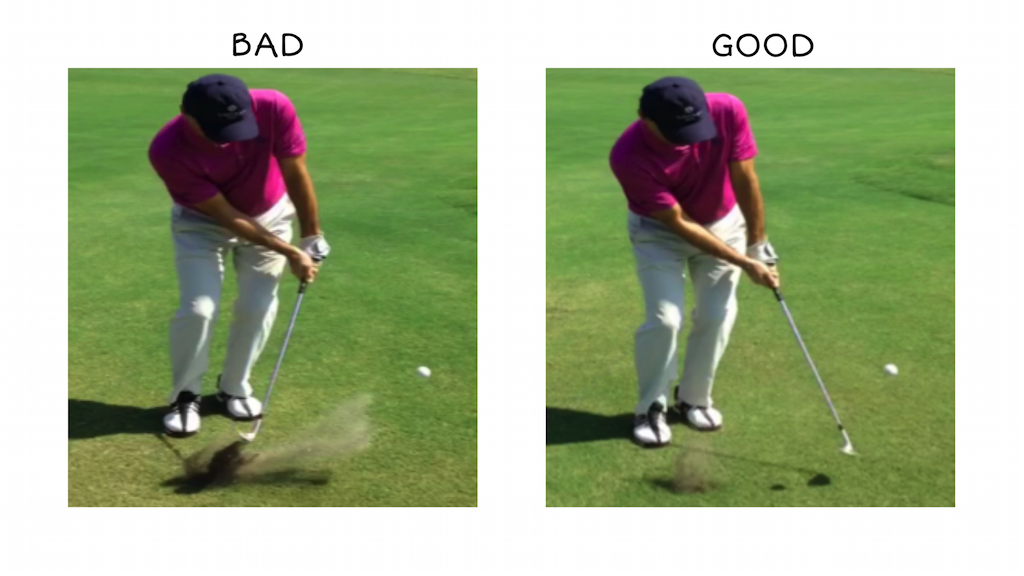
So take your time and understand that if you slap at the ball it’s not a problem with your hands; it’s a reaction to your pivot slowing down. Try the one-handed pitching drill and I promise you will improve.
- LIKE94
- LEGIT12
- WOW5
- LOL1
- IDHT0
- FLOP6
- OB3
- SHANK48
Instruction
Clement: Stop ripping off your swing with this drill!

Not the dreaded headcover under the armpit drill! As if your body is defective and can’t function by itself! Have you seen how incredible the human machine is with all the incredible feats of agility all kinds of athletes are accomplishing? You think your body is so defective (the good Lord is laughing his head off at you) that it needs a headcover tucked under the armpit so you can swing like T-Rex?
- LIKE0
- LEGIT1
- WOW2
- LOL0
- IDHT0
- FLOP0
- OB0
- SHANK2
Instruction
How a towel can fix your golf swing

This is a classic drill that has been used for decades. However, the world of marketed training aids has grown so much during that time that this simple practice has been virtually forgotten. Because why teach people how to play golf using everyday items when you can create and sell a product that reinforces the same thing? Nevertheless, I am here to give you helpful advice without running to the nearest Edwin Watts or adding something to your Amazon cart.
For the “scoring clubs,” having a solid connection between the arms and body during the swing, especially through impact, is paramount to creating long-lasting consistency. And keeping that connection throughout the swing helps rotate the shoulders more to generate more power to help you hit it farther. So, how does this drill work, and what will your game benefit from it? Well, let’s get into it.
Setup
You can use this for basic chip shots up to complete swings. I use this with every club in my bag, up to a 9 or 8-iron. It’s natural to create incrementally more separation between the arms and body as you progress up the set. So doing this with a high iron or a wood is not recommended.
While you set up to hit a ball, simply tuck the towel underneath both armpits. The length of the towel will determine how tight it will be across your chest but don’t make it so loose that it gets in the way of your vision. After both sides are tucked, make some focused swings, keeping both arms firmly connected to the body during the backswing and follow through. (Note: It’s normal to lose connection on your lead arm during your finishing pose.) When you’re ready, put a ball in the way of those swings and get to work.

Get a Better Shoulder Turn
Many of us struggle to have proper shoulder rotation in our golf swing, especially during long layoffs. Making a swing that is all arms and no shoulders is a surefire way to have less control with wedges and less distance with full swings. Notice how I can get in a similar-looking position in both 60° wedge photos. However, one is weak and uncontrollable, while the other is strong and connected. One allows me to use my larger muscles to create my swing, and one doesn’t. The follow-through is another critical point where having a good connection, as well as solid shoulder rotation, is a must. This drill is great for those who tend to have a “chicken wing” form in their lead arm, which happens when it becomes separated from the body through impact.
In full swings, getting your shoulders to rotate in your golf swing is a great way to reinforce proper weight distribution. If your swing is all arms, it’s much harder to get your weight to naturally shift to the inside part of your trail foot in the backswing. Sure, you could make the mistake of “sliding” to get weight on your back foot, but that doesn’t fix the issue. You must turn into your trial leg to generate power. Additionally, look at the difference in separation between my hands and my head in the 8-iron examples. The green picture has more separation and has my hands lower. This will help me lessen my angle of attack and make it easier to hit the inside part of the golf ball, rather than the over-the-top move that the other picture produces.


Stay Better Connected in the Backswing
When you don’t keep everything in your upper body working as one, getting to a good spot at the top of your swing is very hard to do. It would take impeccable timing along with great hand-eye coordination to hit quality shots with any sort of regularity if the arms are working separately from the body.
Notice in the red pictures of both my 60-degree wedge and 8-iron how high my hands are and the fact you can clearly see my shoulder through the gap in my arms. That has happened because the right arm, just above my elbow, has become totally disconnected from my body. That separation causes me to lift my hands as well as lose some of the extension in my left arm. This has been corrected in the green pictures by using this drill to reinforce that connection. It will also make you focus on keeping the lead arm close to your body as well. Because the moment either one loses that relationship, the towel falls.


Conclusion
I have been diligent this year in finding a few drills that target some of the issues that plague my golf game; either by simply forgetting fundamental things or by coming to terms with the faults that have bitten me my whole career. I have found that having a few drills to fall back on to reinforce certain feelings helps me find my game a little easier, and the “towel drill” is most definitely one of them.
- LIKE11
- LEGIT1
- WOW2
- LOL0
- IDHT0
- FLOP2
- OB0
- SHANK8
Instruction
Clement: Why your practice swing never sucks
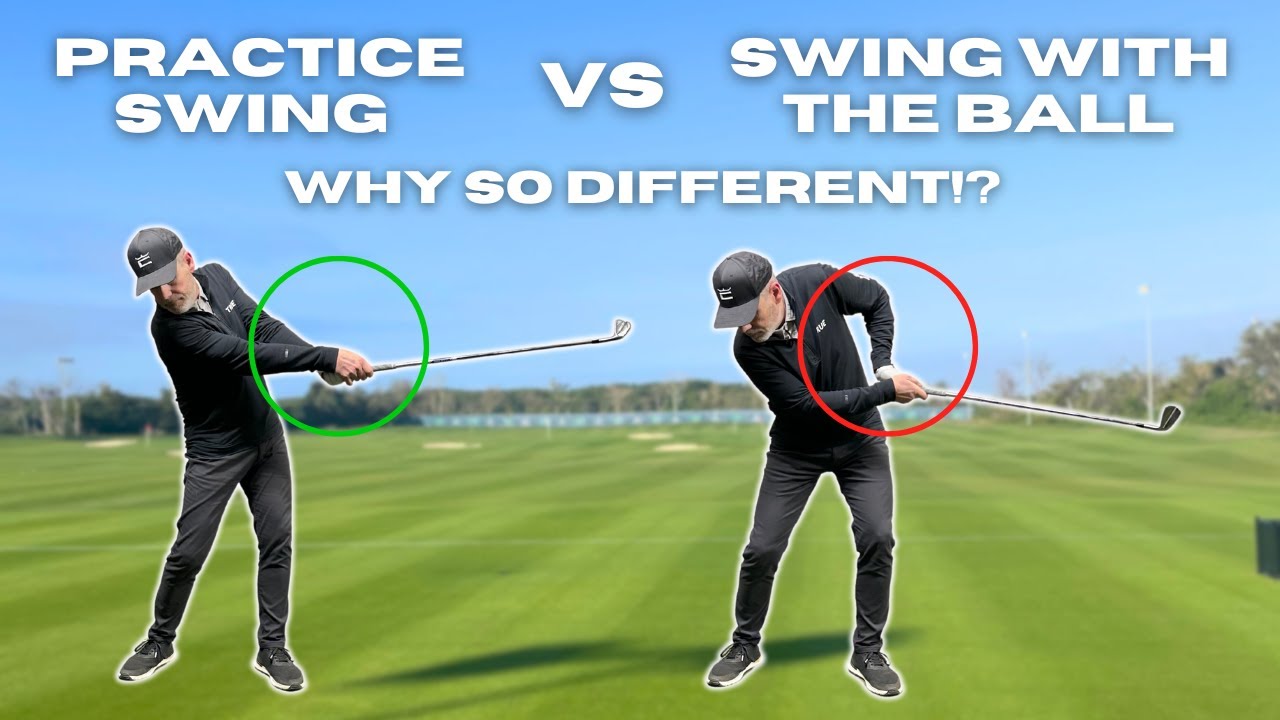
You hear that one all the time; I wish I could put my practice swing on the ball! We explain the huge importance of what to focus on to allow the ball to be perfectly in the way of your practice swing. Enjoy!
- LIKE0
- LEGIT0
- WOW0
- LOL0
- IDHT0
- FLOP0
- OB0
- SHANK2
-
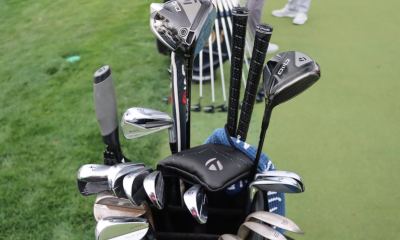
 Whats in the Bag3 weeks ago
Whats in the Bag3 weeks agoScottie Scheffler WITB 2024 (March)
-
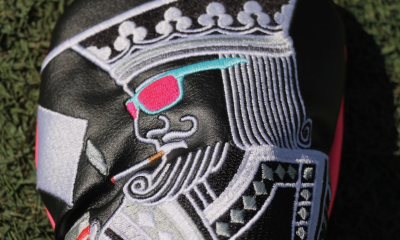
 Tour Photo Galleries3 weeks ago
Tour Photo Galleries3 weeks agoPhotos from the 2024 Arnold Palmer Invitational
-
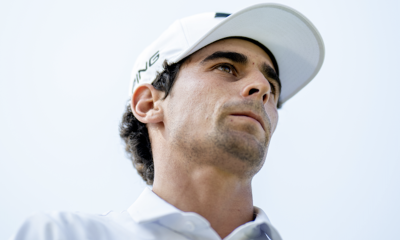
 19th Hole3 weeks ago
19th Hole3 weeks agoJoaquin Niemann names 3 PGA Tour events he’d love to play each year ‘in a perfect world’
-
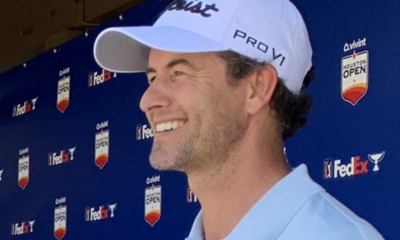
 19th Hole3 weeks ago
19th Hole3 weeks ago‘Seems suspect’ – PGA Tour pro hits out at decision to hand Adam Scott and Webb Simpson Bay Hill sponsor exemptions
-
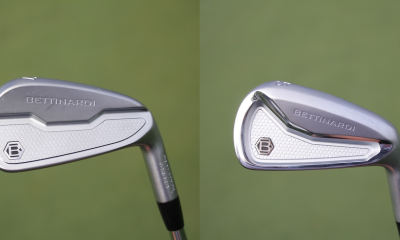
 Equipment3 weeks ago
Equipment3 weeks agoSpotted: Bettinardi irons at the Arnold Palmer Invitational
-

 19th Hole2 weeks ago
19th Hole2 weeks agoPaulina Gretzky opens up on receiving death threats following DJ’s move to LIV Golf
-

 19th Hole3 weeks ago
19th Hole3 weeks agoVincenzi’s 2024 Arnold Palmer Invitational betting preview: Big names ready to pounce at Bay Hill
-
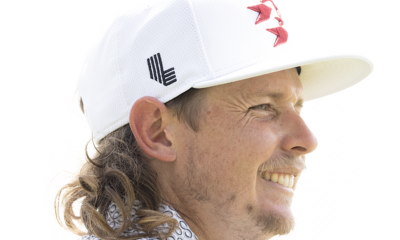
 19th Hole3 weeks ago
19th Hole3 weeks agoVincenzi’s LIV Golf Hong Kong betting preview: Trio of major champs primed for big week



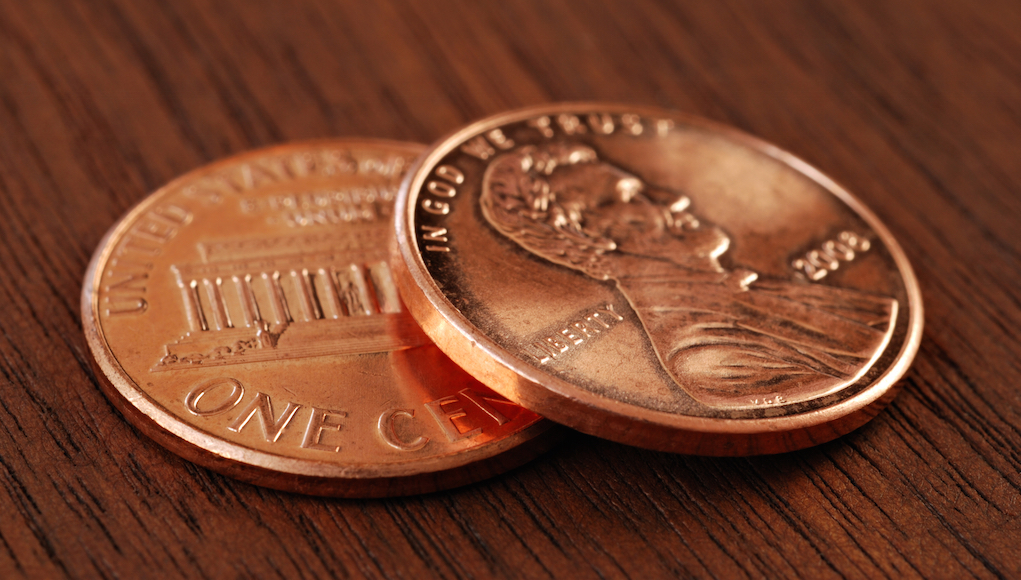
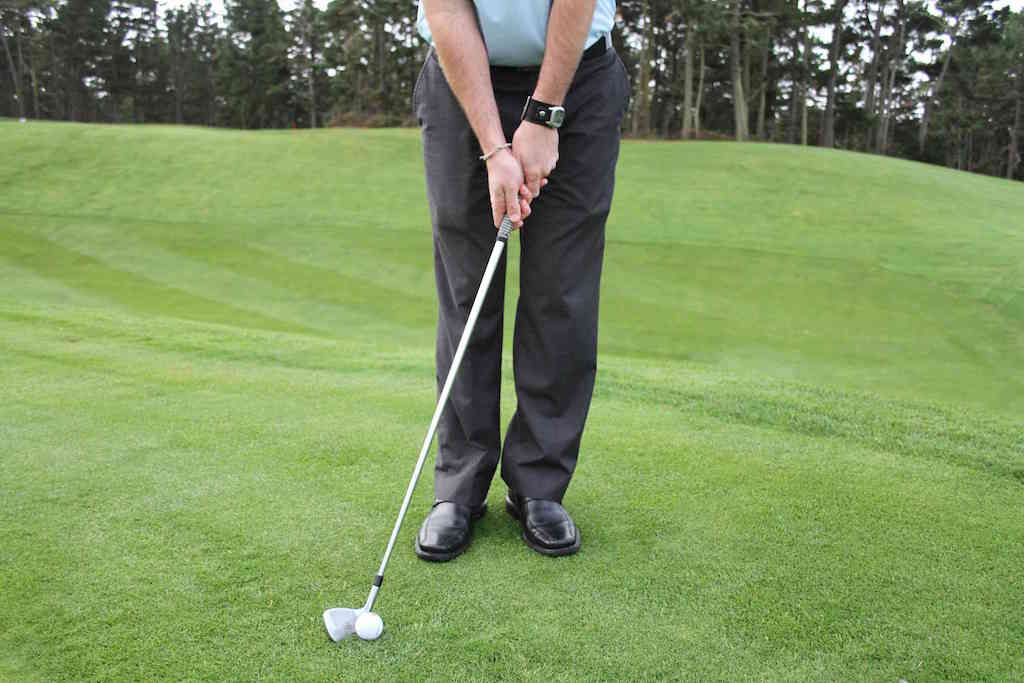
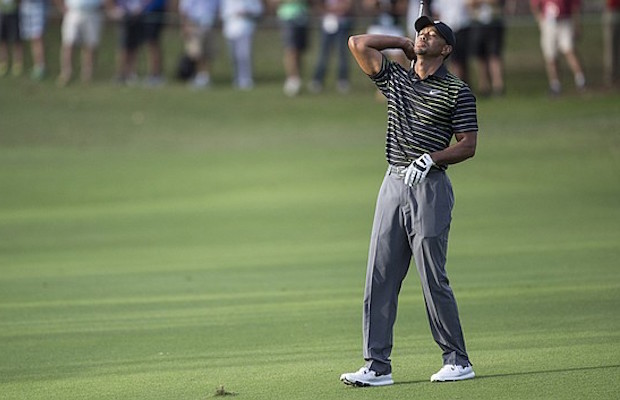
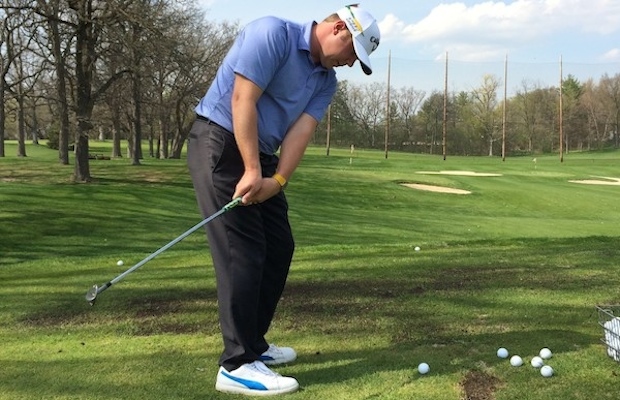
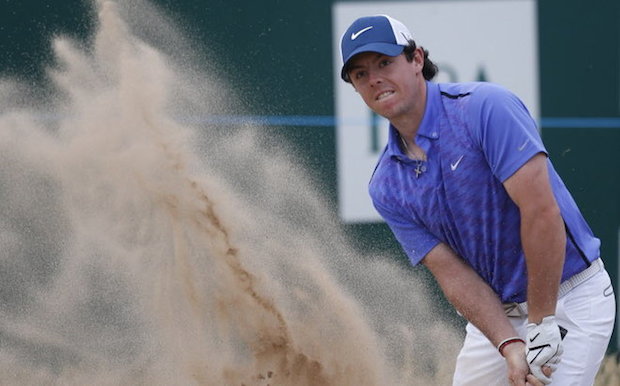
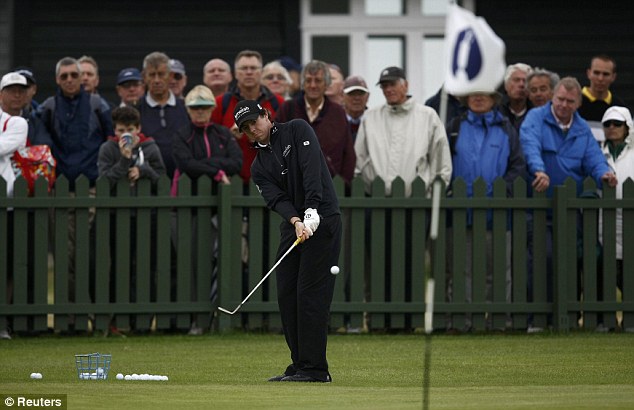









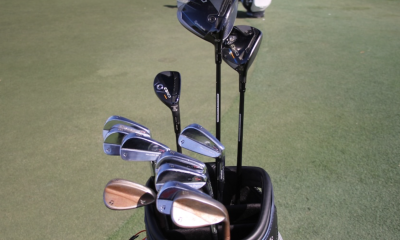

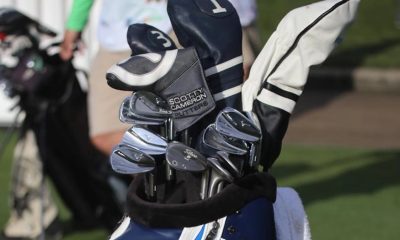

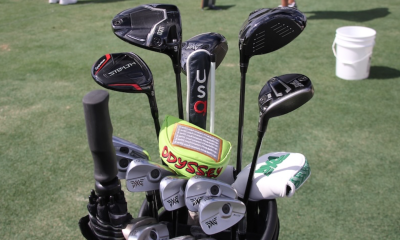

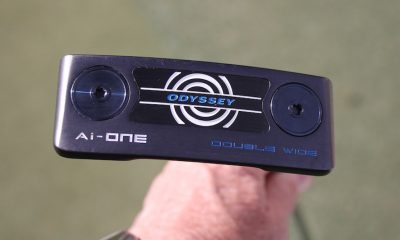

Pingback: Mastering Short Game Shots: Conquer Fear and Doubt! – linkedgreens
Keith W.
Oct 29, 2016 at 7:01 am
The CHIP YIPS ARE REAL! At one time I had a +2.3 handicap and my short game was so good that I was described as “being able to get up-and-down out of a ball washer”…not a bad compliment, and true. Things changed, and for 10 years my short game became a total liability. But I found a fix that worked for me that eliminated the need to think about technique and built trust in my chipping again.
Rather than thinking about the swing or manipulating my wrists, hands, club face or anything else I remembered something I had told and taught to junior golfers…”the club is smarter than you are”. Translation: the club has plenty of loft, and has bounce to accommodate the lie conditions…all it needs is a pilot.
The FIX…instead of letting the hands, arms, and shoulders dictate the results, let the club dictate the shot. This is accomplished by addressing the ball in a slightly more upright position, taking the club back to what is appropriate for the length of the shot and once the backswing is in place simply drop the club from the top of the swing and allow the weight of the head to do its magic on the downswing. I could really feel the head and it works because the club has no fear, no doubt, and no brain. If you try this you will find that the club will do its job as manufactured.
After applying this logic (and a couple of extra pieces of lead tape to and L wedge) in practice for about an hour on a chipping green, I found that I was no longer guiding the club to avoid errant shots, but instead releasing the head again and thereby curing the mechanical failures. After practicing this for a couple of days I took it to the course and had ZERO fat or skulled shots, and in fact reclaimed 90% of my proficiency with my lob wedge.
Fast forward 3 years…since putting this into practice I have cured the chip yips and my confidence in my short game has returned. I don’t even think about it anymore…except for today, writing this advice.
Steve S
Oct 28, 2016 at 9:48 am
Yips are a mental problem that CAN be cured. Confidence cures the yips. Confidence is gained by a lot of successful practice. Successful practice comes from good fundamentals. This applies to all sports and physical activity. A strong willed person can overcome almost any physical problem(pertaining to sports). A weak willed person needs to work on their personality.
tom stickney
Oct 28, 2016 at 2:55 pm
Steve– ever taught someone with the yips before? It’s easy to help them overcome them in practice but when the light comes on during the tournament all bets are off.
Scooter McGavin
Oct 28, 2016 at 4:54 pm
Sorry, Tom, but Steve is mostly right. “Yips” is just a name people made up to make an excuse for their poor performance at something. When the “tournament light goes on” the golfer needs to have put in the appropriate preparation (slow fundamental practice) so they can rely on that. Calling it “the yips” only perpetuates the problem because it makes it sound like a disease that is out of the golfer’s control (“Oh noes, I got de yips!”). Honestly, I think golfers would be much better off if everyone stopped calling it the yips and just said “Hey, I’m having some problems chipping (putting, driving, etc.). I need to go to the chipping green and sort them out with basic, patient fundamental practice”. As a teacher, if someone tells you they have the yips, the best thing you can do for them is tell them there’s no such thing, and that they’ve just developed a flaw they need to work out.
Double Mocha Man
Oct 27, 2016 at 10:52 am
Interesting that you didn’t go on to mention the skulled shots. But, as is obvious, they are the mental (faulty) correction to hitting fat shots. So they go together.
tom stickney
Oct 27, 2016 at 4:24 pm
not always…could be a faulty pivot only.
Charlie
Oct 27, 2016 at 8:27 am
Tiger comment in 3…2…1…
The dude
Oct 28, 2016 at 6:08 am
He is set to retire after 17’….I promise